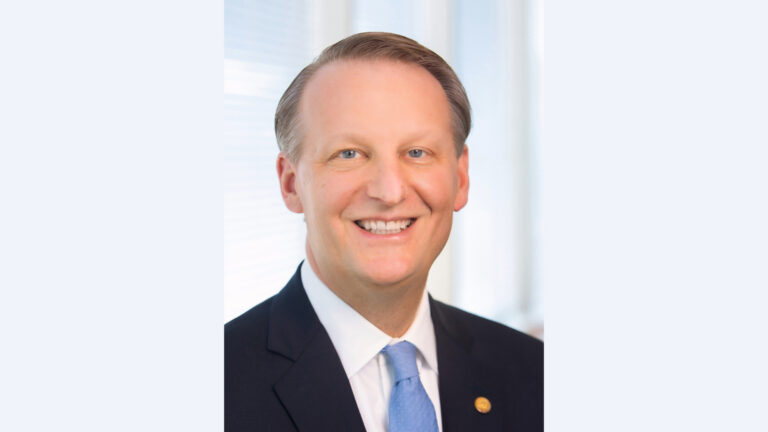For years, as insurance premiums climbed and Americans worried about medical expenses, economists have pointed to industry concentration as one cause.
That policy conversation, however, usually focuses on how today’s competitors exit the market, through hospital mergers or medical practice buyouts. It neglects the other side of the competition question: whether new providers are able to join the fray or bring innovative service models to patients.
Over the past four years, I helped build a new primary care practice in California, Nevada, and Arizona. We mostly care for elderly people, usually in their homes.
As we’ve expanded, our practice has confronted one reason that health care markets are so slow to change and often so uncompetitive. In nearly all the places that we operate, we faced a thick, sclerotic web of bureaucratic barriers to starting or expanding a primary care practice, or to trying new ways of meeting patients’ needs. These hurdles have little to do with federal regulation — the most debilitating bureaucracy is imposed by private insurers and incumbent providers.
For context, before starting services, a primary care practice must first secure a network contract, then navigate a credentialing or “enrollment” process for each individual physician, nurse practitioner, and physician assistant employed in that the practice, and then ensure that those professionals are listed correctly in online directories. In health care’s tellingly anachronistic argot, this final step is still often called “printing.” If all steps are not completed, patients’ care will often not be covered by their health plan. And primary care providers must navigate this process separately with each insurer, and sometimes multiple times with the same insurer, thanks to corporate silos.

How to make after-hours primary care better for doctors — and patients
This administrative gantlet helps explain why so many Americans struggle to find primary care, why costs are stubbornly high, and why the health care industry often feels like the land that time forgot. In some local markets, incumbent provider organizations control much of this process, and so can use administrative barriers to exclude new entrants and new care models.
To illustrate this, we can start in the so-called Inland Empire. This is a region east of Los Angeles, with roughly 4 million residents and some of the worst primary care access in California. There are fewer primary care physicians per capita in the Inland Empire than in Iowa or Kentucky. In the fall of 2022, our group started the process to offer primary care in this market.
After roughly 10 months of paperwork, Heritage, one of the dominant local managed care organizations, told us it decided it was unable or unwilling to admit any primary care providers offering in-home or virtual primary care. That’s puzzling because Heritage controls services for many patients on Medicare Advantage, those Advantage plans are required to include all Medicare-covered services, and Medicare itself does cover virtual and in-home care. (Heritage did not respond to STAT’s request for comment.)
The other major network in the area, Optum, a subsidiary of UnitedHealth Group (UHG), took about seven months to finalize a network contract and, after an additional 18 months, has not finished credentialing and listing a single PCP in health plan directories to start caring for patients, even though the same PCPs are already credentialed with other UHG subsidiaries, and have been for years. (Optum also did not respond to STAT’s questions.)
For comparison, this bureaucratic marathon is essentially the same provider “enrollment” process that the federal Medicare program regularly completes in two to four weeks, with minimal fuss.
The issue is not particular to one region, nor limited to one part of the process. In Northern California, Hill Physicians, which controls provider networks in large parts of the Bay Area, has rejected new doctors while expressing only one concern: that new PCPs in the area might compete with incumbent providers.
David Joyner, CEO of Hill Physicians, told STAT that Pine Park “did not meet our criteria.” Joyner added that because of Pine Park’s focus on caring for seniors in their homes, it is “not a traditional primary care model.” That comment neatly illustrates the issue: an incumbent provider blocking new primary care groups and suppressing innovation.

Free medical school tuition unlikely to have a major impact on the U.S. health care system
In Las Vegas, meanwhile, a PCP that wants to offer in-network care to all UHC members must complete separate contracting processes with three different UnitedHealth Group subsidiaries, and then navigate duplicative credentialing procedures with each of them. None of those processes will involve any substantive clinical quality review or other value-added activity — it’s just the same paperwork three different times, even for one physician within a single metro area, and all three cycles will be slower than Medicare itself.
A UnitedHealthcare spokesperson pointed the finger at federal and state rules and accreditation standards for complicating the credentialing process, and said the company wants to simplify it.
But of course, our practice works with many other insurers in Nevada, who sell the same plan types and so are all subject to the same standards, and those carriers don’t make a single PCP sign three contracts and go through credentialing three times, just to see patients in Las Vegas. It’s hard not to see this in the context of UHG’s operation in Nevada, which is rooted in a string of historical acquisitions, and which retains overlapping bureaucracy from several of those predecessor companies.
Other insurers also hinder or complicate new services. For example, even as policymakers try to improve access to behavioral health services, Elevance Health (aka Anthem) told Pine Park that it requires primary care groups that want to offer behavioral health care to set up a separate legal entity under a new tax ID and go through an additional contracting process, for no clear reason.
In response to questions from STAT, Elevance seemed a bit confused and said, “Agreements like the kind Pine Park Health has typically allow a practice to include multiple specialties (including behavioral health) under one group tax ID number.” This may be true in the abstract. Yet Elevance staff in California described this seemingly pointless requirement to us verbally and in writing, leaving little question about what is happening in practice. This, again, highlights the harm of insurers’ tangled bureaucracy: Arbitrary local decisions can strangle small practices and impede new services, regardless of what the contract may allow.
Once clinicians are already contracted and credentialed, SCAN Health Plan, a large tax-exempt Medicare Advantage plan, has at times then taken two full years to correctly list PCPs employed by our practice in SCAN network directories, preventing patients from accessing care and blocking clinicians from starting services.

Primary care physicians should be at the heart of treating Alzheimer’s
In response, SCAN told STAT, “Pine Park is not contracted directly with SCAN, they are subcontracted with SCAN’s at-risk provider groups.” This misses the point, though. The PCPs were already credentialed by SCAN’s at-risk groups, and outsourcing credentialing does not exempt SCAN from Medicare rules that explicitly require Advantage plans to update network directories within 30 days of receiving new provider information.
Elevance is similarly slow, sometimes taking six or more months to update its directories, for PCPs that are already credentialed, in groups with longstanding contracts. Elevance told STAT, “We … work hard to ensure that our provider directories are up-to-date and as accurate as possible.”
Whatever those efforts may be, the multi-month delays our group has often seen from Elevance in California also seem to ignore the Medicare update standard (30 days), as well as California regulations (two weeks), and the No Surprises Act (two days). More importantly, they also prevent seniors from accessing services they are entitled to under their Medicare Advantage plans.
These obstacles aren’t just about contracting, credentialing, or directories. Some insurers require written approval from the plan for an already-contracted PCP to open a new clinic location or start services in a new geographic area. And so on.
To be fair, incumbent insurers and providers are not the only ones pouring sand into the competitive gears. State Medicaid agencies are often archaic and obstructionist, creating administrative hassles for PCPs interested in serving lower-income patients. As one simple example, Nevada’s Medicaid agency demands wet ink signatures on provider enrollment paperwork, even though the signed forms then have to be scanned and transmitted electronically through a state website anyway, and despite a longstanding state law that clearly recognizes electronic signatures for official purposes.
On the other side of the Sierras, California’s Medicaid agency sometimes takes as long as five or six months to admit a new PCP, even though there is nothing about its procedure that adds useful quality control or oversight, above and beyond Medicare’s (much shorter) process. And of course, since most Medicaid enrollees are funneled into managed care plans, a PCP who completes the state’s obstacle course then must start an additional contracting and credentialing process with those insurers, before caring for patients who rely on Medicaid.
In some cases, these administrative hurdles may be overtly anticompetitive — rejecting a new PCP who might challenge incumbents, excluding entire care delivery methods (like virtual or in-home care), or blocking new locations.
More often, though, they probably just reflect lethargic bureaucracies, with outdated systems and indifferent or ineffective management. And of course, too little existing market pressure to force change today.
Regardless of why, these barriers to entry beget health care markets that are frozen in amber. Patients and clinicians want health care to change, but this rigid and obsolete bureaucracy suppresses innovation and curtails access.
In our case, after almost three years of paperwork, our practice abandoned plans to start care in the Inland Empire. Ultimately, the administrative obstacles erected by a couple of large incumbents blocked a new PCP group from serving patients in a region sorely in need of primary care.
In housing policy, the YIMBY movement has focused policy attention on how local zoning rules and homeowner vetoes limit construction, driving home prices skyward. Health care needs a similar moment.

AAFP’s CEO on how to keep primary care doctors in the field
This would mean federal and state authorities who crack down on local incumbents erecting barriers to new services; a few large, attention-grabbing fines for insurers that ignore regulations requiring timely updates to provider directories; and new rules that obligate insurers to automatically accept Medicare-enrolled clinicians without duplicative paperwork. Above all, it requires health plan executives who recognize that a stale, uncompetitive provider landscape will continue to inflate costs and infuriate patients, with much blame falling on insurers.
For Americans to experience a more accessible and affordable health care system, those executives must sweep away some of the organizational dead wood that — whether through intent or inertia — stifles anything new.
Dan O’Neill currently works as chief commercial officer for Pine Park Health, a medical practice that provides in-home primary care for seniors in California, Nevada, and Arizona, and previously served as a RWJF health policy fellow in the U.S. Senate.
